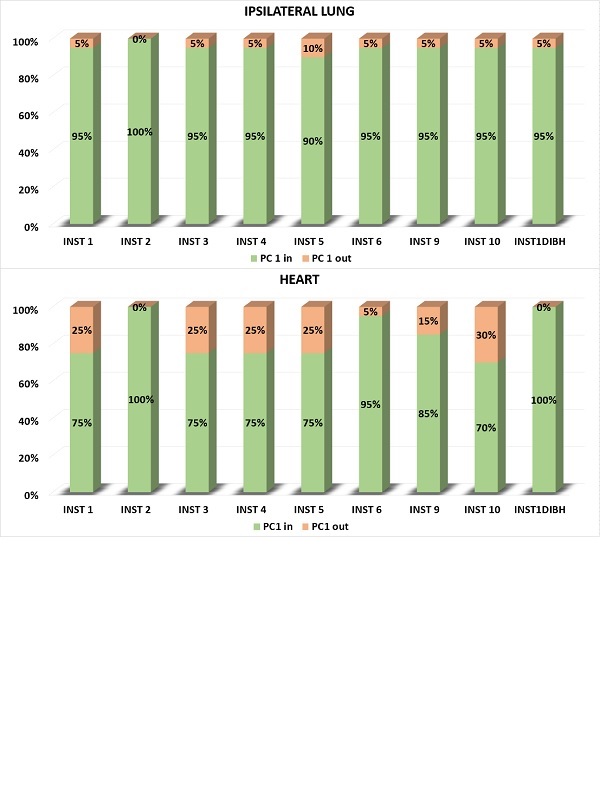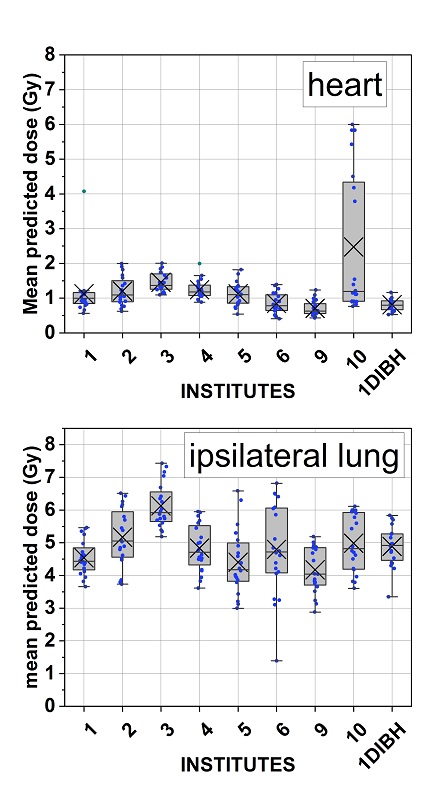Inter-institute transferability of KB plan prediction models for FB LWB on DIBH candidates
PO-1651
Abstract
Inter-institute transferability of KB plan prediction models for FB LWB on DIBH candidates
Authors: Alessia Tudda1, Castriconi Roberta1, Giovanna Benecchi2, Francesca Dusi3, Valeria Landoni4, Aldo Mazzilli2, Caterina Oliviero5, Alessandro Scaggion3, Lorenzo Placidi6, Claudio Fiorino1
1IRCCS San Raffaele Scientific Institute, Medical Physics Dept, Milan, Italy; 2University Hospital of Parma AOUP, Medical Physics Dept, Parma, Italy; 3Veneto Institute of Oncology IOV–IRCCS, Medical Physics Department, Padua, Italy; 4IRCCS Istituto Nazionale dei Tumori Regina Elena, Medical Physics, Rome, Italy; 5University Hospital, “Federico II”, Medical Physics, Naples, Italy; 6Fondazione Policlinico Universitario A. Gemelli IRCCS, uosd medical physics and radioprotection, Rome, Italy
Show Affiliations
Hide Affiliations
Purpose or Objective
The aim of this study was to test the transferability of Knowledge-based (KB) plan prediction models trained in several Institutes with free-breathing (FB) left whole-breast (LWB) tangential-field (TF) in patients submitted to deep inspiration breath-hold (DIBH) LWB TF irradiation.
Material and Methods
In the context of a national multi-institutional project, eight institutes set LWB-TF KB models by using RapidPlan (Varian Inc.), following previously agreed methodology for model’s building and validation. One of the eight institutes provided an additional model trained with a LWB-TF DIBH population (INST1DIBH), considered in the study as a “benchmark” of the prediction on DIBH candidates. Models were tested on 20 new LWB-TF DIBH randomly chosen patients from five out of the eight institutes aiming to perform a cross validation test. Transferability of the nine models (i.e.: eight free-breating, one DIBH) on DIBH geometry/anatomy was assessed considering the overlap of the geometric Principal Component (PC1) when applied to the 20 test patients (normalized to the 40Gy/15 fraction scheme). The degree of transferability was quantified by the number of cases in which the ipsilateral lung and heart PC1 was within the 90th percentile of the training set. PC1 was previously shown to be a robust parameter to quantify if a model can be reasonably applied to a patient outside the training cohort in terms of DVH prediction. In addition, the heart and lung mean predicted dose (Dmean), lung V20Gy, heart V5Gy and V25Gy were also included in the analysis aiming to quantify inter-Institute variability in plan prediction.
Results
Figure 1 shows the fraction of DIBH patients with PC1 within the 90th percentile of the training set for all models. Ipsilateral lung provided good results in terms of transferability: PC1 values were inside in 8 out of 9 models for at least 90% of patients. Concerning heart, PC1 values out of the 90th percentile, ranged from 5% to 30% with only 3 out of 9 models with PC1 inside for at least 90% of patients.
INST1DIBH’s model heart PC1 was within 90th for all patients. Concerning the mean and V20Gy predicted ipsilateral lung dose, SDmean=0.8 Gy and SDV20Gy=2.8% were found.
Regarding the heart, SDmean= 0.4 Gy, SDV5Gy=1.4% and SDV25Gy=0.8% were found (Figure2). Inter-institute SD of DVH prediction in the dose range from 20% to 80% was 0.4% and 2% for heart and ipsilateral lung respectively


Conclusion
The obtained results of the ipsilateral lung transferability and dose/statistical prediction, support the possibility to use LWB-TF FB models for the prediction of LWB-TF DBHI candidates. Heart transferability and dose/statistical prediction should be considered with caution, with most free breathing models showing only moderate transferability. Importantly, the INST1DIBH model was fully transferable on DIBH patients of other Institutes